A thrush-like bird with a rather long graduated tail. Males are glossy black above and a beautiful rich chestnut below.
White-rumped shama
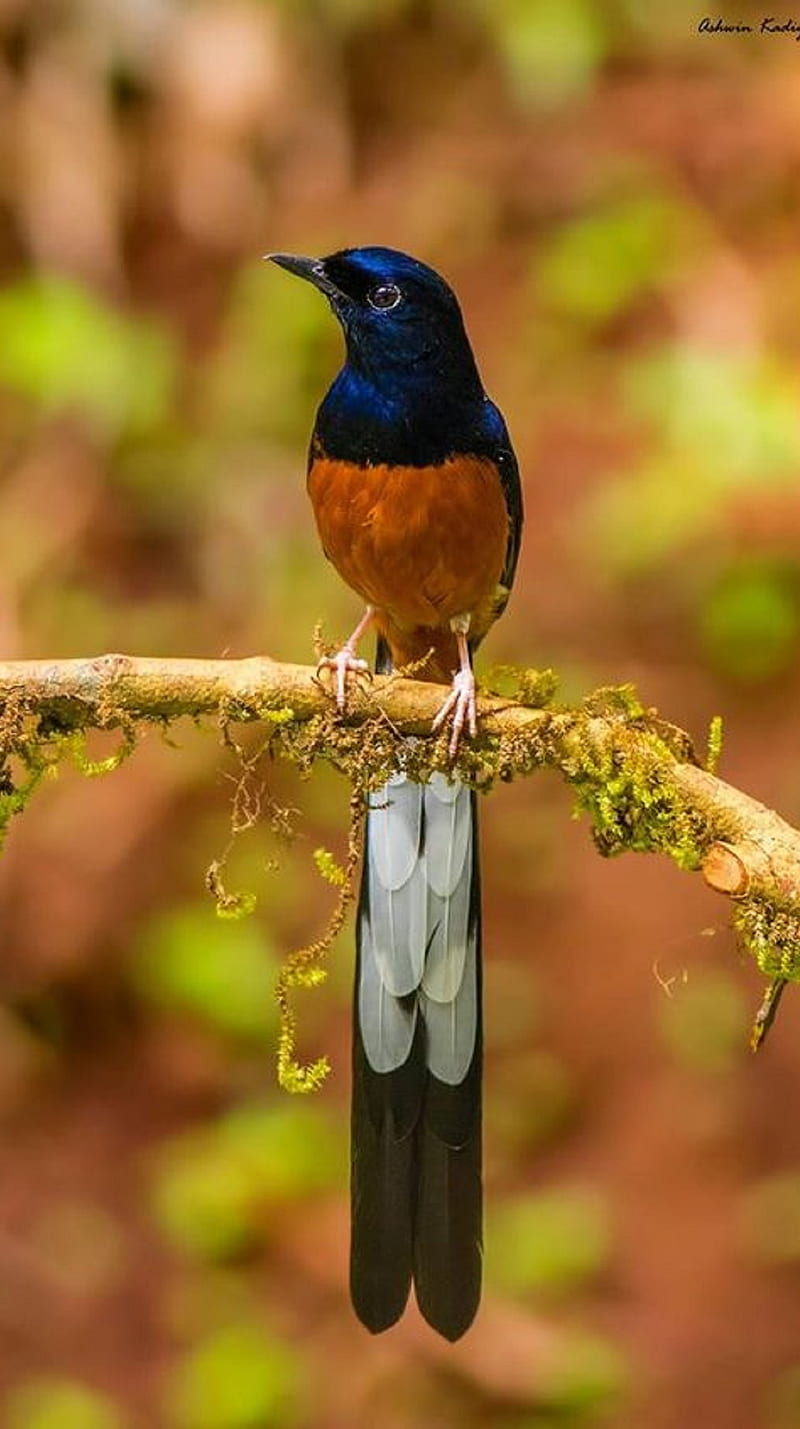
The white-rumped shama (Copsychus malabaricus) is a small passerine bird of the Muscicapidaen family. Weighing between 1 and 1.2 ounces and are around 9 to 11 inches in length. Males are glossy black with a fiery orange to yellow belly and white feathers on the rump and outer tail.

Photo Courtesy of JJ Harrison (https://www.jjharrison.com.au/) / CC BY-SA 3.0
Females are more grayish-brown than the males and not as long.
Both sexes have a black bill and pink feet. Juveniles have a more grayish or brownish coloration, similar to that of the females, with a blotchy or spotted chest.
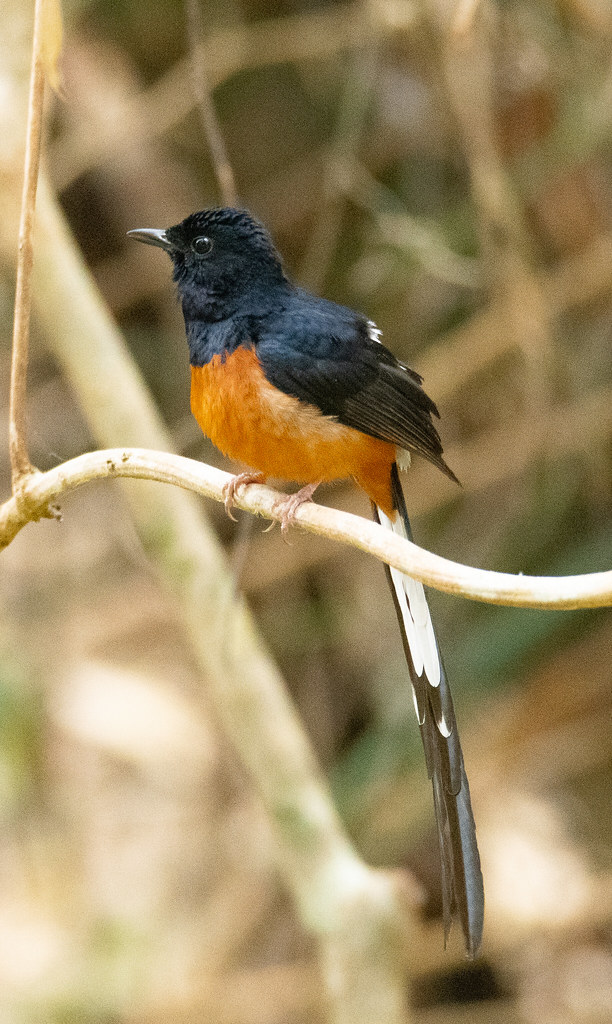
Photo Courtesy of Bird Brian / CC BY 2.0
These birds are native to South Asia but were introduced to Kaua’i, Hawai’i, in early 1931 from Malaysia, and to O’ahu in 1940.
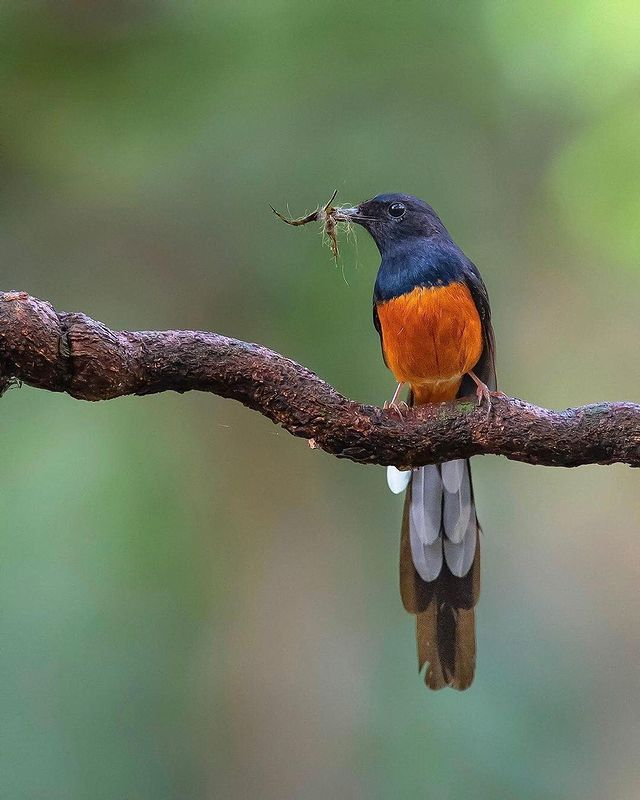
They are native across scrub and secondary forests in South and Southeast Asia, preferring densely vegetated areas.
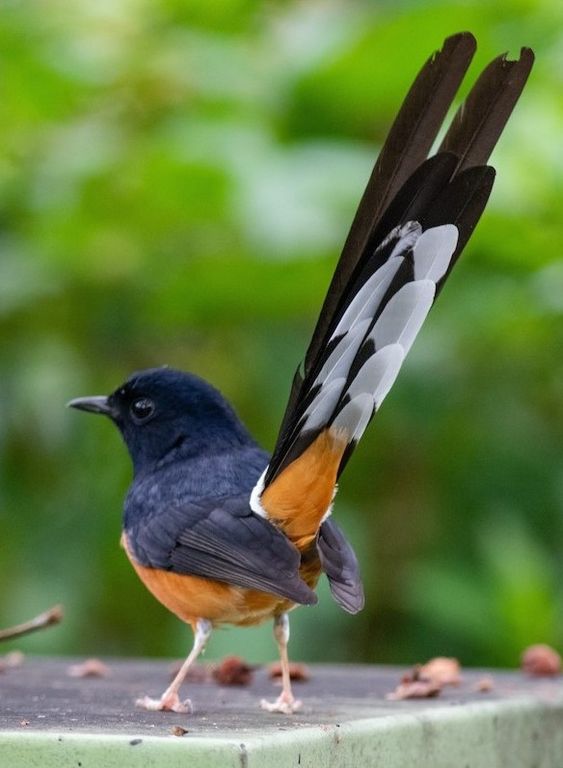
White-rumped Shama feeds on insects in the wild but in captivity, they may be fed on a diet of boiled, dried legumes with egg yolk and raw meat.
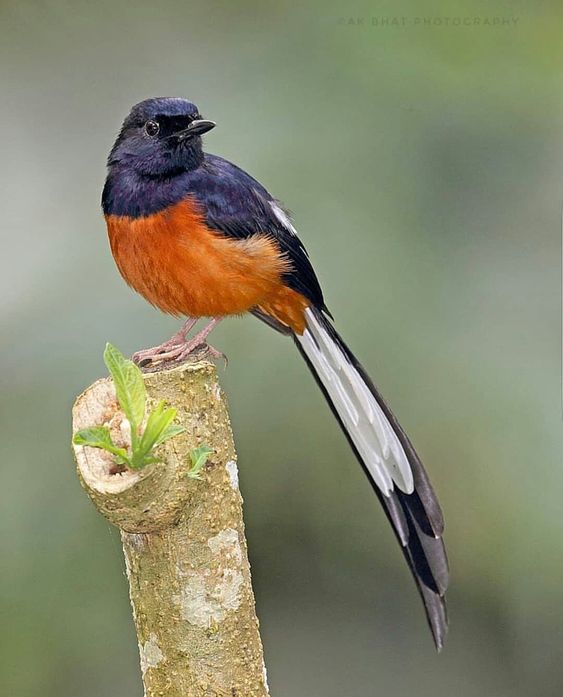
During the breeding season, males pursue the female, alight above her, giving a shrill call, and then flick and fan out their tail feathers. It is followed by a rising and falling flight pattern by both sexes. If the male is unsuccessful, the female will threaten the male, gesturing with the mouth open. Parental behavior includes both sexes participating. The nests are mainly comprised of roots, leaves, ferns, and stems, and incubation lasts between 12 and 15 days. The eggs are white to light aqua, with variable shades of brown blotching, and are approximately 0.7 by 0.9 inches.

Due to this bird’s widespread range, it is not considered to be at any risk on the IUCN list.

Photo Courtesy of Bird Brian / CC BY 2.0
Watch and listen to this right here in the video below:




